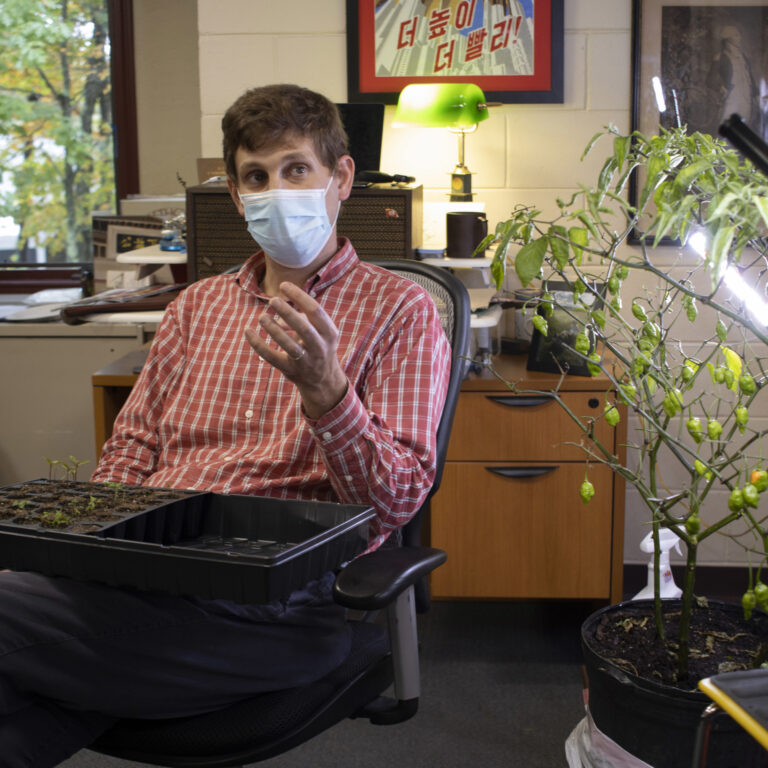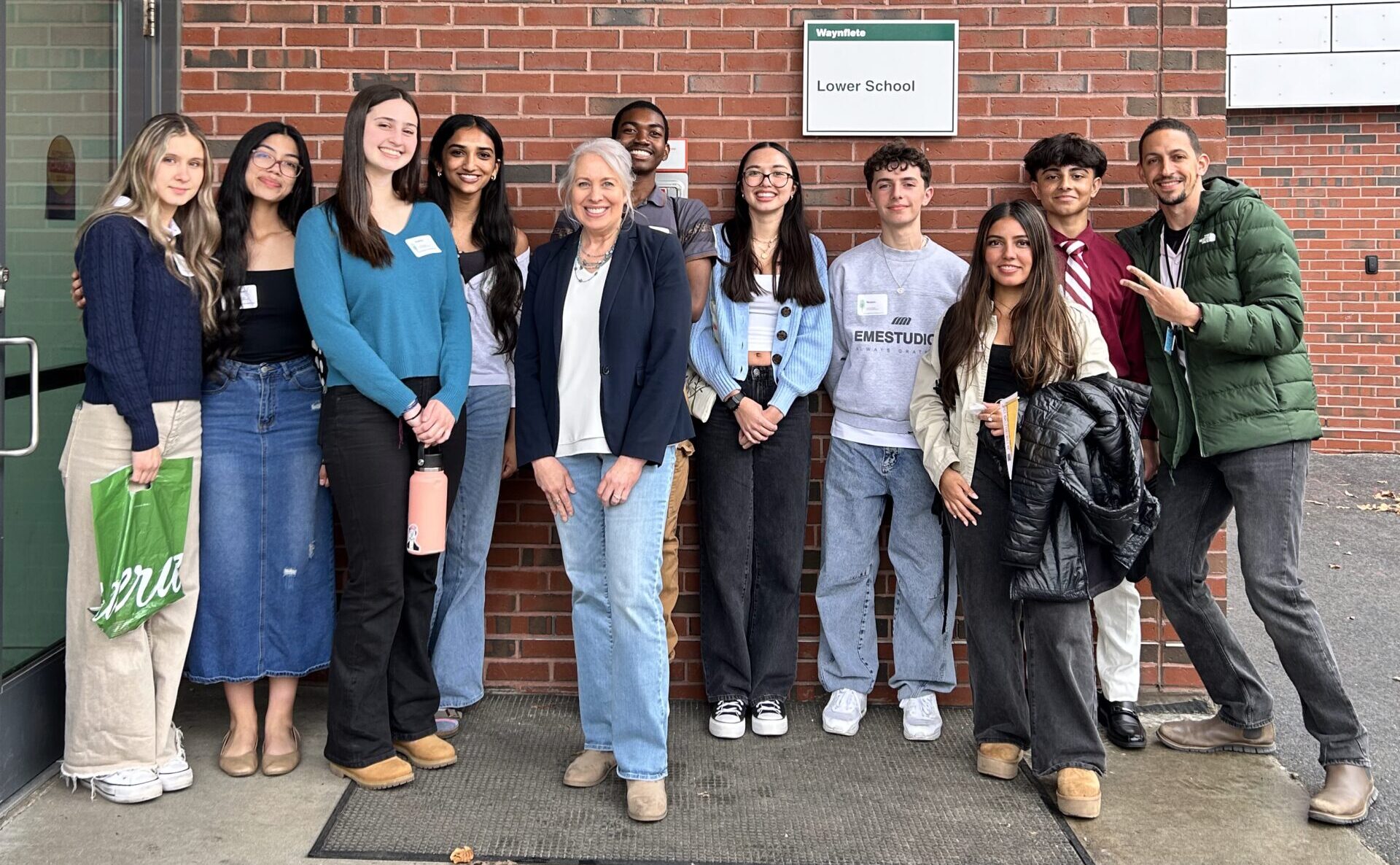Members of the Asian Culture Club and numerous culinary aficionados gathered at lunchtime on November 17 to hear Director of Global Education Brandon Gauthier expound on the history and characteristics of three spices–Sichuan peppercorns, Grains of Paradise, and Long Pepper. The attendees first gathered their own sample bags of each spice, and then settled in for enlightenment.
Gauthier informed his audience that Sichuan peppercorns are not actually peppers, but the berries of the prickly ash tree. These tiny red nodules, split during the drying process, resemble the mouths of a sock puppet. After showing a brief video about the ingredients of Sichuan cooking, Gauthier invited the Asian Culture Club members to taste the peppercorns for themselves. The effect on the palate was first spicy, then tingly (especially when water was consumed).
Grains of Paradise, which hail from West Africa were next. Gauthier related that this spice is often used as a substitute for black pepper. After sampling, the students proclaimed the spice to be “more earthly” and “citrusy” in flavor.
Long Pepper, which resembles minuscule pinecones, was the most aromatic spice presented to the audience. Grown mainly in India and on the island of Java, its flavor is considered “complex,” with overtones of ginger, cinnamon, nutmeg, and cardamom. Although purported to have a ”sweet heat,” those who nibbled on the Long Peppers found they had quite a kick.
Dr. Gauthier sent away the participants with little packets of spices, recipes, and the thought that “plants bring humanity together.”



